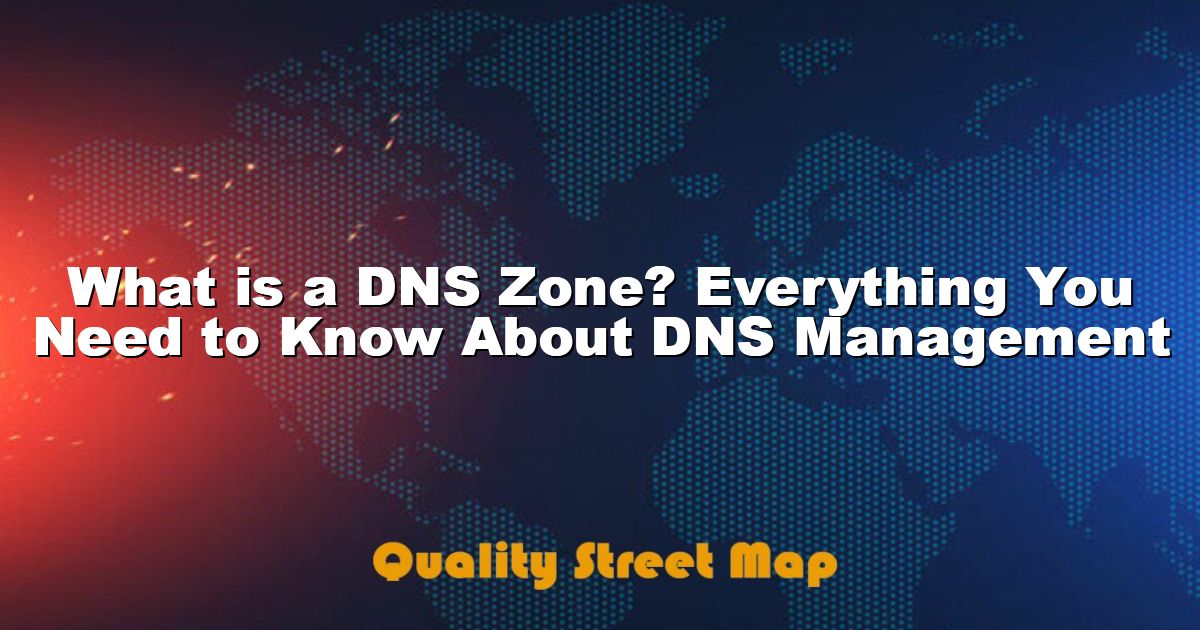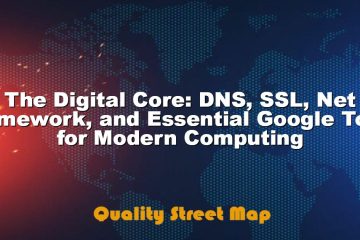What is a DNS Zone? Everything You Need to Know About DNS Management

Understanding The Basics Of A DNS Zone
To effectively manage and troubleshoot internet connectivity issues, it’s pivotal to grasp what is a DNS zone. A DNS zone represents a partition of the domain namespace for which a certain administrative entity, such as a company or a department, is responsible. This segmentation allows for a modular and efficient way of managing DNS records. DNS zones can vary in size and hierarchy, with some zones representing just one domain and others comprising multiple domains and subdomains. Understanding these zones is crucial for anyone involved in web hosting, network administration, or IT infrastructure.
When considering what is critical about DNS zones, recognize that each zone contains a set of DNS records. These records dictate the behavior of domain name resolution within that zone. Zones are anchored by zone files stored on name servers, which are crucial in mapping domain names to IP addresses. Without proper DNS zone management, users might experience delays or failures in reaching websites or online services. Moreover, DNS zones enable specific administrative functions, which are vital for robust DNS management.
Main Functions Of A DNS Zone
- Translate domain names into IP addresses
- Facilitate email routing through MX records
- Support domain redirection and aliasing using CNAME records
- Ensure the security and integrity of name resolution with DNSSEC
- Manage domains and subdomains using A and AAAA records
- Configure load balancing across multiple server resources
- Provide reverse DNS lookup capabilities with PTR records
The significance of DNS zones cannot be overstated in the context of internet infrastructure. They form the backbone of how users seamlessly connect to different websites, in essence directing internet traffic efficiently. Also, their role in security protocols like DNSSEC protects against data breaches and spoofing attacks by verifying the authenticity of DNS data. A well-structured DNS zone can profoundly enhance the speed and safety of domain navigation for users worldwide.
In summary, while understanding the DNS at a fundamental level is significant, appreciating the vast functionalities and impact of DNS zones elevates one’s capability in comprehensive DNS management. Without these zones, the dynamic and efficient nature of the internet we have today would be virtually impossible. For anyone tasked with the responsibility of managing DNS, recognizing what is encompassed within a DNS zone, as well as its broader implications, is indispensable.
Components And Structure Of DNS Zones Explained
The Domain Name System (DNS) plays a crucial role in the internet’s infrastructure. A DNS Zone is essentially a segment of the DNS namespace. It holds records that delegate different parts of your domain to specific DNS servers. The structure of a DNS Zone is hierarchically designed to efficiently direct traffic. What is important to note is that within this structure, each zone is managed and administered individually, allowing for greater control and organization of the domain’s components.
To effectively manage DNS zones, one must understand the significance of zone files and resource records. These elements are the backbone of DNS configuration and provide critical instructions that guide DNS servers. There are several steps to configure DNS zones effectively:
- Determine the specific domain for the DNS zone you intend to manage.
- Create and edit the zone file pertinent to your domain.
- Define the necessary resource records, such as A, AAAA, or MX records, within the zone file.
- Validate your zone file to check for any potential errors.
- Apply DNSSEC for added security to protect against data corruption.
- Synchronize changes across primary and secondary DNS servers.
- Periodically review and update the zone file to ensure its accuracy.
The importance of maintaining a structured DNS Zone is underscored by the efficiency it brings to domain management. Through the previously mentioned configurations, domain owners can optimize how their domain functions on the internet. Understanding the differences and roles of primary and secondary DNS servers is another key component in this process.
Primary And Secondary DNS Servers
Primary DNS servers are the authoritative source for zone information; they store the original read-write version of the zone records. In contrast, secondary DNS servers act as backup, containing read-only copies of the same zone records to ensure continuity in case the primary server fails. Together, they form a robust system that maintains the availability and reliability of domain name resolutions. What is often overlooked is the necessity of keeping both servers synchronized to prevent discrepancies and ensure seamless domain functionality.
Zone Files And Resource Records
Zone files are essential components within a DNS zone. They contain a collection of resource records, each detailing specific data about a domain, such as its IP address or mail server configurations. These records include various types such as A, AAAA, CNAME, MX, and TXT, each serving distinct purposes. Proper configuration of these resource records is vital for accurate domain resolution and management. Understanding the intricate details of each record type will significantly enhance one’s ability to manage DNS zones effectively. By ensuring correctly configured zone files, domains can achieve optimal performance and security.
Key Takeaways For Effective DNS Management
In the realm of DNS management, understanding What is crucially entails knowing the purpose and function of DNS zones. Effective DNS management ensures that your website’s users can reliably reach your services without experiencing delays or errors. By maintaining organized and efficient DNS records, you can enhance your site’s performance and availability. Proper management helps prevent common issues such as propagation delays, which can lead to downtime and frustrated users.
For those managing DNS, it’s critical to adhere to a set of best practices that aid in the smooth operation of your DNS infrastructure. Implementing these strategies not only improves reliability but also enhances security and helps mitigate the risk of DNS-based attacks.
Best Practices For Managing DNS
- Regularly audit DNS records to ensure they are up-to-date and accurate.
- Utilize redundant DNS servers to minimize the risk of downtime.
- Implement DNS Security Extensions (DNSSEC) to protect against DNS spoofing.
- Limit access to DNS management tools to authorized personnel only.
- Monitor DNS queries to identify and address unusual patterns that could indicate an attack.
- Use a reputable DNS hosting provider with robust security features.
- Keep DNS software and services patched and updated to guard against vulnerabilities.
One vital aspect of DNS management is the ability to swiftly address and resolve issues as they arise. Responsiveness is key, allowing changes to be implemented quickly, whether in response to an attack or a simple organizational need. Tools that provide detailed insights and analytics are invaluable, helping administrators to make informed decisions promptly.
To summarize, effective DNS management hinges on a clear understanding of What is required to maintain a secure, efficient, and scalable DNS infrastructure. By placing emphasis on security, regular audits, and utilizing best practices, organizations can ensure their DNS systems remain reliable and resilient. These efforts not only safeguard the organization’s reputation but also enhance the overall user experience.















